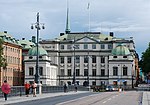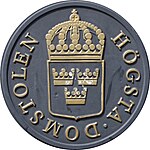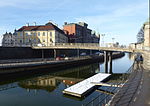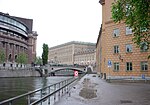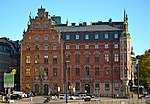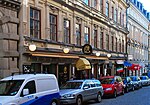Riddarhustorget
Odonyms referring to a buildingSquares in Stockholm
Riddarhustorget (Swedish: [ˈrɪ̂dːarhʉːsˌtɔrjɛt], "Square of the House of Knights") is a public square in Gamla stan, the old town in central Stockholm, Sweden, named after its location in front of the House of Knights (Riddarhuset). The present square, largely occupied by the through traffic to and from Munkbroleden and Vasabron, and surrounded by old palaces occupied by modestly extrovert state-level offices, is the faint remains of what used to be the centre of Swedish politics; the palace of the Swedish nobility standing face-to-face with the emergent Liberal press, the entire scene using the idyllic eastern canal as a backdrop.
Excerpt from the Wikipedia article Riddarhustorget (License: CC BY-SA 3.0, Authors).Riddarhustorget
Riddarhustorget, Stockholm Gamla stan (Södermalms stadsdelsområde)
Geographical coordinates (GPS) Address External links Nearby Places Show on map
Geographical coordinates (GPS)
| Latitude | Longitude |
|---|---|
| N 59.325616666667 ° | E 18.066280555556 ° |
Address
Riddarhustorget
Riddarhustorget
111 28 Stockholm, Gamla stan (Södermalms stadsdelsområde)
Sweden
Open on Google Maps
